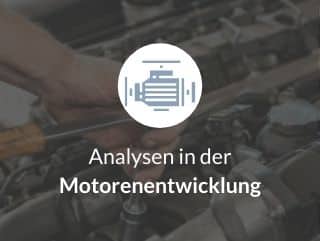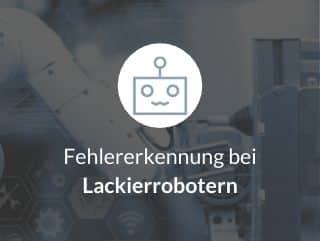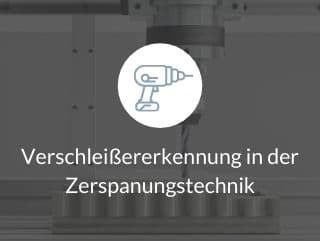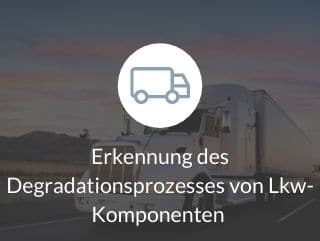PREDICTIVE MAINTENANCE WITH [at]
In the past, maintenance was always carried out according to fixed, predefined intervals. Today, you can realise predictive maintenance scenarios with the help of AI models. These models can compare current sensor data with historical data and thus recognise unusual behaviour patterns in components of a machine that would otherwise remain hidden. In this way, measures can be taken at an early stage to prevent a downward trend in product quality, a deterioration or even a failure of the machine.Our predictive maintenance approach
Even though some companies suggest that they can offer predictive maintenance as a ready-made software solution, the reality is often different. Predictive maintenance using AI is an automation task that requires a fundamental understanding of the process and the data generated from it, and thus usually requires an individual solution. In order to deal with the very heterogeneous circumstances at our customers, we have developed a 4-stage maturity model. This helps to better understand the status quo and enables a joint iterative approach.1.
State-
monitoring
In the classic understanding of pure condition monitoring, AI does not yet play a role at this point. The focus here is on the Display of sensor data in the form of dashboards.
However, it is possible that domain-specific logic for call-to-action is integrated, such as an alarm when threshold values are exceeded.
2.
Anomaly-
recognition
Machine learning methods are then used to detect changes in the data patterns. The aim is to identify changes that indicate potential damage so that Repairs can be carried out before a breakdown occurs.
At this level, the aim is not to predict when the failure will occur, but to detect anomalies in order to carry out maintenance steps close to the potentially imminent failure.
3.
Extension of the fault diagnosis
This stage extends the pure anomaly detection to the point of Fault diagnosis. After the onset of the ageing process has been detected by machine learning algorithms, the diagnostic component is triggered.
This component is intended to Fast and targeted maintenance by using Explainable AI to localise the cause.
4.
Prediction of the residual utilisation
duration
At the highest level of maturity, the pure detection of the ageing process around the Prediction of the expected process behaviour expanded.
The problem to be solved is now no longer a classification problem (machine state is ok / not ok), but a regression problem with the prediction of the time of machine failure. With this level of knowledge, the Choice of the timing of the maintenance be done in the best possible way.
4 Success factors for
Predictive Maintenance Projects
Predictive maintenance is inconceivable without comprehensive data. However, data can vary greatly in terms of quality and level of detail. This has a major impact on the development of AI models, as they can only achieve good results if the data contain a large amount of information.
For production machines, the data is often available in different levels of detail:
- Raw data
- Event-based data
- High-level information
- High-level actions
For the development of AI models, it makes a big difference whether only error codes or the raw data from the sensors are available. A common problem is often the lack of important contextual information. Different batches with 2 kg and 2.5 kg workpiece weights have different effects on the sensor data and must be taken into account so that these differences are not wrongly classified as an anomaly.
A smooth flow of data processing and the use of trained AI models for maintenance optimisation is only possible through an orchestrated interaction of several systems. Here is a brief overview of the different components needed for an infrastructure:
- A connectware to connect sensors or machines from different manufacturers to a uniform system
- Scalable data storage and a Big Data processing engine to handle streaming data (if real-time data is required)
- Computing resources and environments for training AI models
- Services to communicate the predictions of the AI models to the end user
A common problem in the area of predictive maintenance is the large number of sensor manufacturers with different protocols for transmitting data. Together with our partner Cybus, who specialises in the area of Connectware, we can overcome this challenge.
A deep understanding of the basics of machine learning is something every Data Scientist should know. What are the important assumptions of an algorithm? How can you avoid the pitfalls of information leakage when training?
In addition to the correct selection of algorithms, however, the art usually lies in correctly formulating the automation task as a machine learning problem. This is especially true in the field of predictive maintenance. The fundamental problem of anomaly detection is the lack of a definition of how different a novelty must be before classifying it as abnormal. Marked data for training models is often not available to this context.
Either it is not possible to observe normal and abnormal behaviour in all possible ways, or it is too expensive to obtain specific labels.
Thanks to the numerous projects we have carried out in the field of predictive maintenance, we can provide optimum support for your project with a wealth of experience.
User-centricity is important for all products with an AI component. Black-box solutions are often built that are not trusted in daily use.
Human in the loop is the central approach here. In a dashboard for the worker at the machine or in the process control centre, it must be recognisable why certain forecasts or anomaly detections were made. When we implement AI technology for our customers, existing processes and ways of working are always changed, so change management plays an important role in the success of the project.
Our partners



Our Predictive Maintenance Experts

Carlo Voß
Senior Data Scientist

Dr Christina Sievers
Senior Principal Data Scientist

Vanessa Snagowski
Principal Data Scientist

Naghmeh Fazeli
Senior Data Scientist

Tobias Mühler
Trainee Data Scientist
Projects of our customers
Since 2012, we have successfully implemented numerous predictive maintenance projects. Learn more about some of our customer projects on the topic of AI in the manufacturing industry here.
Any questions?
You want to know how AI and Data Science can reduce maintenance costs and machine downtime in your production, but you still have many questions:
- For which machines does a predictive maintenance approach using AI make sense?
- What framework conditions must be in place to ensure that anomaly detections are also used to create concrete added value in production?
- Is the data stored so far sufficient for training AI models?
- Which features can be taken into account in addition to the sensor data?
- How do I integrate different production machines into the company-wide Big Data infrastructure?
Then talk to our experts and get an initial assessment of your project plan!
Talk to us

Simon Decker
Predictive Maintenance Projects




